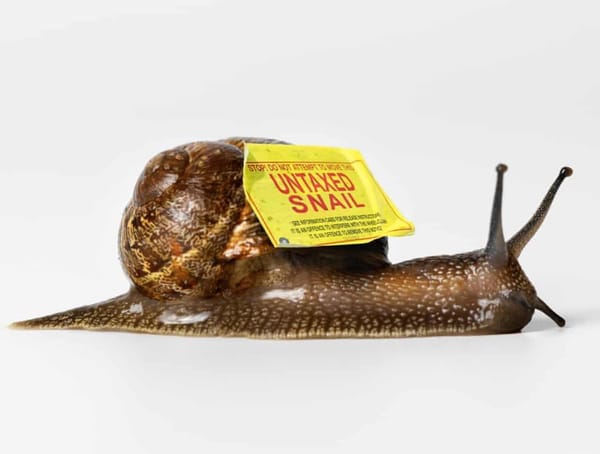A book was destroyed because it killed people who read it

From Tempo de Conhecer: "There is a book whose reading — or mere possession — proved fatal for many. Not because it contained subversive ideas but because the object itself was deadly. It is a 19th-century book known as Shadows from the Walls of Death — a dark title for an even more lethal content. The work was published in 1874 by Robert Kedzie, a physician and professor of chemistry in the United States. His goal was not to kill, but to warn. At the time, many household wallpapers contained arsenic-based pigments, especially the famous "Paris green." The problem was that, over time and with humidity, these pigments released toxic gases, such as arsine, which could cause headaches, vomiting, seizures, and even death. Kedzie collected 86 authentic samples and bound them into a book. People who handled the book without protection began to fall ill, and there were reports of deaths linked to direct exposure to the book's pages."
We breathe through only one nostril at a time but scientists aren't sure why

From Medical Discovery News: "most people don't realize that when you breathe through your nose, you do so more from one nostril than the other and your body knows to switch to the other nostril every few hours. This nasal cycle is controlled by the autonomic nervous system which also controls things we don't think about like heart rate and breathing. Our bodies deliberately send more blood to an erectile tissue between the two nostrils to increase its size and direct the air flowing through one of the nostrils. After a few hours, the airflow switches to the other nostril. Why do we do this? Some scientists believe the alternating airflow allows each nostril to maintain optimal moisture levels so no one side gets dried out. It may also protect against respiratory infections or allergies. Others believe it's tied to our olfaction or sense of smell. It's possible that the quicker and slower airflow in each nostril optimizes us to the vast range of smells. Some smells take longer to detect and transmit to the brain.
Schoolkids were forced into an underground bunker but all managed to escape

From Wikipedia: "In 1976, 55-year-old school bus driver Frank Edward Ray was transporting 26 students home when a van drove into the bus's path. Ray stopped, and three men with nylon stockings covering their faces hijacked the bus. The kidnappers ordered Ray and the children into vans, then drove them to a quarry where they were forced at gunpoint to climb down a ladder, through a hatch, and into an underground bunker, a buried truck trailer equipped with ventilation and a small amount of food and water. The kidnappers removed the ladder, covered the hatch and weighted it with two 100-pound industrial batteries, and buried the opening. After several hours, Ray and the older children stacked the mattresses to reach the hatch, then 14-year-old Michael Marshall wedged a piece of wood into the opening, moved the sheet metal and batteries, and dug away the remainder of the debris covering the entrance. Sixteen hours after being imprisoned, Ray and the children climbed out of the bunker."
Hi everyone! Mathew Ingram here. I am able to continue writing this newsletter in part because of your financial help and support, which you can do either through my Patreon or by upgrading your subscription to a monthly contribution. I enjoy gathering all of these links and sharing them with you, but it does take time, and your support makes it possible for me to do that. I also write a weekly newsletter of technology analysis called The Torment Nexus.
Every year this Minnesota neighborhood gathers to sharpen a giant pencil

From AP: "More than 1,000 people gathered Saturday in a scenic Minneapolis neighborhood for an annual ritual — the sharpening of a gigantic No. 2 pencil. The 20-foot-tall (6-meter-tall) pencil was sculpted out of a mammoth oak tree at the home of John and Amy Higgins. The beloved tree was damaged in a storm a few years ago when fierce winds twisted the crown off. Neighbors mourned. A couple even wept. But the Higginses saw it not so much as a loss, but as a chance to give the tree new life. The sharpening ceremony on their front lawn has evolved into a community spectacle that draws hundreds of people to the leafy neighborhood on Lake of the Isles, complete with music and pageantry. Some people dress as pencils or erasers. Two Swiss alphorn players provided part of this year’s entertainment. The hosts commemorated a Minneapolis icon, the late music superstar Prince, by handing out purple pencils."
Somehow Carlos Rodrigues managed to keep living with only half a brain

From ScoopWhoop: "We’ve all read stories and seen TV pieces about people who survived horrific accidents, but were left wholly changed by it physically. In that vein, the story of Carlos Rodrigues takes the cake. Carlos didn’t always look like that – he was a regular person with a full head until the age of 14. However, after an alcohol and drug binge, he stole a car, got into an accident, and went flying through the windshield. Carlos smashed his head on the asphalt, and doctors consequently had to remove a significant portion of his skull and brain to save his life. Thus, he became the man with literally half a brain. Despite the procedure, he retains most of his mental functions, and can do pretty much everything a man with a full head and brain can do. One theory for why there was not much impairment in his memory and cognitive ability is because of brain plasticity — if someone's brain is damaged when they are young, the remaining areas adapt and stand in for the missing parts, so they can function fairly normally."
The largest reciprocating engine in the world weighs over 2,000 tons
The largest reciprocating engine in the world, the Wärtsilä-Sulzer RTA96-C, produces over 80 megawatts (107,000 BHP).pic.twitter.com/VSm48D8JpV
— Wonder of Science (@wonderofscience) June 6, 2025
Acknowledgements: I find a lot of these links myself, but I also get some from other newsletters that I rely on as "serendipity engines," such as The Morning News from Rosecrans Baldwin and Andrew Womack, Jodi Ettenberg's Curious About Everything, Dan Lewis's Now I Know, Robert Cottrell and Caroline Crampton's The Browser, Clive Thompson's Linkfest, Noah Brier and Colin Nagy's Why Is This Interesting, Maria Popova's The Marginalian, Sheehan Quirke AKA The Cultural Tutor, the Smithsonian magazine, and JSTOR Daily. If you come across something interesting that you think should be included here, please feel free to email me at mathew @ mathewingram dot com



